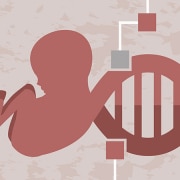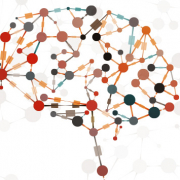Can the genetic ‘fat map’ aid obesity prevention?
New research has discovered more than 90 genetic regions that influence obesity, tripling the number of previously known regions
NHS obesity prevention measures have been under scrutiny this week, with suggestions that more resources should be directed towards national lifestyle intervention programmes for gradual weight-loss, rather than the more drastic bariatric surgery.
Obesity, with attendant health problems such as diabetes and cardiac disease, is undoubtedly a significant problem for the NHS, so anything that can help reduce it is important. We are well aware of the important contributory roles of lifestyle and environmental factors in obesity, but can genetics also help preventative efforts?
Rare genetic conditions
It has been recognised for some time that genetics can influence obesity: one classic study of identical twins (with identical DNA) brought up together or apart showed that inherited factors held more sway than shared environments. Patients with rare genetic disorders (such as congenital leptin deficiency) that cause massive early weight gain have helped researchers understand the genetics and biology underlying normal hunger and weight control.
However, little attention has been given to genetics in normal obesity prevention, since disadvantageous genetic factors simply can’t be altered the way that external influences can, tackling our ‘obesogenic’ environment with healthier diets and increased physical activity.
New genetic ‘fat map’ discovered
Last month, the largest ever genetic study of obesity uncovered more than 90 genetic regions that influence obesity, tripling the number of previously known regions – discoveries collectively dubbed a genetic ‘fat map’. An international team of researchers from the GIANT consortium (Genetic Investigation of Anthropometric Traits) analysed DNA from more than 300,000 individuals. In separate studies, they uncovered genetic regions associated with Body Mass Index (BMI), and with waist and hip measurements, both measures of obesity.
The newly identified genetic regions that influence BMI are said to account for nearly 3% of variation between individuals. Interestingly, although the ways in which this influence is exerted are yet to be fully understood, some links with the nervous system have been found, including regions involved in learning, memory and even emotional regulation. This has led the researchers to suggest that obesity may be more than a metabolic condition, but potentially also have neurological roots, and the most effective future treatments may need to take this into account.
More than 30 new genetic regions were linked with variability in waist and hip measurements by influencing body fat distribution; over half of these had a stronger effect in women than in men. This sort of information could be valuable in the future in understanding how different genetic factors could affect obesity risk, especially since fat deposition in different areas of the body is associated with different health risks.
Future potential
At present, our understanding of the role of genetics in obesity is incomplete. Much more needs to be uncovered before an appraisal of genetic risk is likely to be of any assistance in efforts to prevent or treat obesity.
Ultimately, though, knowledge of the genetic factors that influence this complex condition could allow a more personalised approach to prevention and treatment. Current efforts to sell ‘DNA diets’ are premature, but the biological reality appears to be that the underlying causes of obesity vary between individuals and so ‘one size fits all’ is unlikely to be the best approach to prevention and intervention.
–









